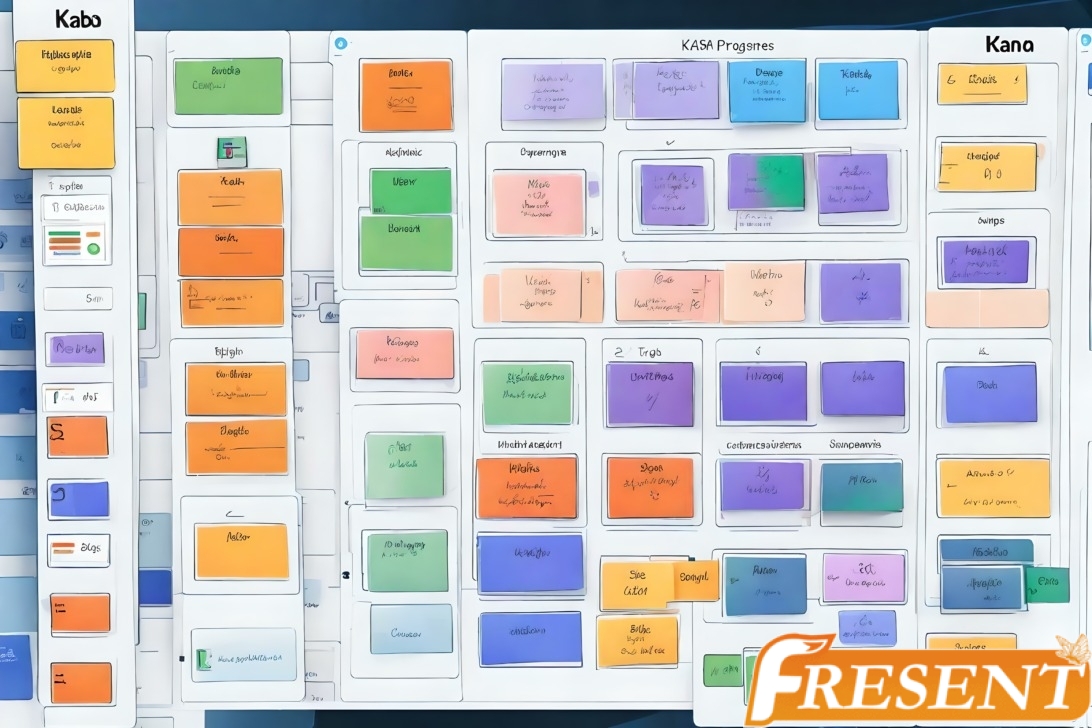If you’re a software development team looking to streamline your processes and increase productivity, SaaS Agile Project Management may be just what you need. This approach combines the flexibility of Agile methodology with the convenience of cloud-based software, allowing teams to collaborate more effectively and deliver high-quality products faster.
With SaaS Agile Project Management, you can break down complex projects into smaller, more manageable tasks that can be completed in short sprints. This allows for greater visibility into project progress and makes it easier to identify and address potential roadblocks early on. Plus, because everything is stored in the cloud, team members can access project data from anywhere at any time, making remote collaboration a breeze. In this article, we’ll explore the basics of SaaS Agile Project Management and show you how to set up your own system for success.
Understanding the Basics of SaaS Agile Project Management
You’ll learn the ins and outs of SaaS Agile Project Management, so you can streamline your development processes and get more done in less time. Agile methodology is a set of principles that guide software development projects through an iterative process. It promotes flexibility, collaboration, and continuous improvement. You’ll be able to adapt to changes quickly as they arise during the project lifecycle.
SaaS Agile Project Management focuses on delivering high-quality products faster by breaking down large projects into smaller pieces or sprints. This allows team members to focus on specific goals and deliverables within a set timeframe while maintaining communication with each other throughout the process. With this approach, you can reduce the risk of delays or roadblocks in your project.
By implementing SaaS Agile Project Management, you can experience several benefits such as improved team morale and productivity, increased customer satisfaction, and higher ROI for your business. The next section will delve deeper into these advantages so that you can take advantage of them for your company’s success.

The Benefits of SaaS Agile Project Management
Surprisingly, adopting SaaS Agile Project Management can yield impressive results. The benefits of this modern approach are countless, but here are the top three:
- Increased Efficiency: With Agile, you can break down your project into smaller tasks and complete them in short iterations called sprints. This allows you to prioritize work based on its value and easily track progress. As a result, your team becomes more productive and efficient.
- Improved Collaboration: Agile promotes collaboration between team members by encouraging frequent communication and transparency throughout the project development process. This helps identify issues early on so that teams can quickly address them before they become bigger problems.
- Flexibility: Agile is designed to allow for changes and adjustments during the development process without causing significant delays or disruptions. It enables teams to adapt to changing requirements as they arise, which is essential in today’s fast-paced business environment.
While there may be some implementation challenges with SaaS Agile Project Management, such as adapting to new processes or training team members unfamiliar with Agile methodologies, the benefits far outweigh these challenges. By embracing this approach to project management, you’ll be able to streamline your development processes and achieve better outcomes.
As you move forward with implementing your SaaS Agile Project Management system, it’s important to keep in mind that success will depend heavily on proper planning and organization from the outset. In the next section, we’ll provide tips for setting up your system for optimal results.
Setting Up Your SaaS Agile Project Management System
If you want to achieve optimal results with your project, it’s crucial to set up your Agile system properly from the beginning. Maximizing efficiency and optimizing workflows are key components of a successful SaaS Agile project management system. To start, you need to choose the right tools that fit your team’s needs. There are many options available, so take the time to research and compare features before making a decision.
Once you have selected the appropriate tools, it’s important to establish clear communication channels and set expectations for how work will be prioritized and completed. This includes defining roles and responsibilities within the team, setting up a regular meeting schedule for updates and progress reports, and creating guidelines for handling disputes or conflicts that may arise during development. By having these structures in place from the outset, you can ensure everyone is working towards common goals with maximum clarity and minimal distractions.
In summary, setting up your SaaS Agile project management system is critical if you want to maximize efficiency and optimize workflows. By choosing the right tools, establishing clear communication channels, defining roles and responsibilities, scheduling regular meetings for updates and progress reports, creating guidelines for dispute resolution; you can create an environment where everyone is working towards common goals with maximum clarity. Next up: Creating a project backlog…
Creating a Project Backlog
To get started on creating your project backlog, you need to identify user stories that capture end-user requirements. Once you’ve identified these user stories, prioritize the tasks based on business value and urgency. Finally, estimate the time and resources needed for each task in order to plan your sprints effectively. By following these key points, you can ensure that your project backlog is well-structured and optimized for success.
Identifying User Stories
When identifying user stories, you can start by breaking down the overall project goal into smaller chunks of functionality that users would find valuable. This process involves conducting user interviews and gathering feedback from stakeholders to ensure that the development process meets the needs of all parties involved. By involving your stakeholders in this process, you can gain a better understanding of what your users need and prioritize accordingly.
Once you have identified your user stories, it is essential to prioritize them based on their importance and impact on the project’s success. Prioritizing user stories allows you to focus on what matters most and ensures that the team is working towards achieving the desired results. In the next section about ‘prioritizing tasks,’ we will discuss how to use these prioritized user stories to create an actionable plan for completing tasks efficiently.
Prioritizing Tasks
Now that you have identified the user stories for your project, it’s time to prioritize the tasks. This is where Agile task management comes in. Task prioritization involves organizing the different tasks based on their importance and urgency. This helps ensure that the most important tasks are completed first, which can save a lot of time and effort in the long run.
To prioritize your tasks effectively, consider using these three key strategies:
- Look at impact – Consider how completing each task will affect your project’s success.
- Time sensitivity – Prioritize tasks based on deadlines or milestones.
- Resources availability – Prioritize tasks based on what resources (e.g., tools, team members) are available at any given time.
By following these strategies, you can make sure that you’re working on the right things at the right time and maximize your team’s productivity.
With task prioritization sorted out, it’s now time to move onto estimating time and resources needed for each task. By doing this thoroughly, you’ll be able to create realistic timelines for completing each task while also ensuring that everyone has access to what they need to complete them efficiently.
Estimating Time and Resources
Estimating the time and resources needed for each task is a crucial step in agile project management. With agile estimation techniques, you can break down tasks into smaller and more manageable pieces, allowing you to assign realistic timelines and allocate necessary resources efficiently. By doing this, you can ensure that your team has everything they need to complete the project successfully.
To estimate time accurately, use historical data from previous projects or consult with subject matter experts on your team. Additionally, resource allocation strategies like assigning specific team members to certain tasks or utilizing automation tools can help streamline your development process and improve efficiency. By estimating time and resources at the beginning of each sprint, you can set up your team for success in completing tasks within the given timeframe.
Transitioning into conducting sprint planning: Once you have estimated the time and resources required for each task, it’s essential to plan out how these tasks will be completed within a specific timeframe. This is where conducting sprint planning comes in handy as it allows you to prioritize which tasks should be tackled first while ensuring that everyone on your team is aware of their responsibilities throughout the sprint.

Conducting Sprint Planning
To streamline your development process, start by conducting sprint planning to ensure everyone is on the same page and working towards the same goals. This involves creating a plan for the upcoming sprint that includes defining tasks and setting priorities. To do this effectively, consider creating personas to represent different types of users who will be impacted by the project. Additionally, user story mapping can help you identify all of the features necessary to meet those users’ needs.
Here are five tips to make your sprint planning successful:
- Set realistic goals for what you want to accomplish during the sprint.
- Make sure everyone is aware of their responsibilities and how they fit into the overall project.
- Prioritize tasks based on their importance and potential impact.
- Identify any potential roadblocks or challenges that may arise during the sprint.
- Schedule regular check-ins throughout the sprint to track progress and make adjustments as needed.
With clear goals in mind and a solid plan in place, you will be able to move forward with confidence knowing that everyone is aligned on what needs to be done. In our next section, we’ll discuss how conducting daily stand-up meetings can help keep your team accountable and ensure that progress is being made towards your goals.
Conducting Daily Stand-Up Meetings
Imagine your team as a group of athletes huddling before a game, ready to discuss their strategies and plans for the day – this is the essence of conducting daily stand-up meetings. These quick and efficient meetings are an essential part of agile project management, allowing for improved communication and team engagement. Daily stand-ups provide an opportunity to share progress updates, identify roadblocks, and adjust plans accordingly.
During these meetings, each team member shares what they accomplished the previous day, what they plan to accomplish today, and if there are any obstacles that may prevent them from completing their tasks. The goal is to keep everyone informed while also fostering collaboration and accountability between team members. This helps ensure that everyone is on track towards meeting project goals.
Incorporating daily stand-up meetings into your SaaS development process can help streamline your workflow by quickly identifying issues that need attention. Not only do these meetings improve communication within the team, but they also encourage active participation from each member. By holding regular check-ins with the entire team present, you can ensure that every voice is heard. With better communication comes greater transparency in project progress which leads to better decision-making overall.
Looking ahead to the next step in agile project management: conducting sprint reviews and retrospectives allows teams to evaluate performance against expectations set at sprint planning sessions.
Conducting Sprint Reviews and Retrospectives
Now that you have been conducting daily stand-up meetings, it’s time to take the next step in improving your team’s agility by conducting sprint reviews and retrospectives. These events are crucial for improving communication within your team and ensuring that everyone is on the same page with regards to progress and goals.
During a sprint review, your team will gather together to discuss what was accomplished during the previous sprint. This is an opportunity to celebrate successes, identify any challenges that were faced, and discuss potential improvements for future sprints. By taking the time to reflect on what worked well and what didn’t, you can make adjustments moving forward that will help your team work more efficiently and effectively.
Following the sprint review, it’s important to hold a retrospective meeting. During this meeting, your team should focus on identifying areas where they can improve their processes or communication. This may involve discussing ways to streamline workflows or implementing new tools or techniques that will help increase productivity. By continually evaluating and adjusting how your team works together, you can ensure that you are always maximizing performance and productivity.
As you continue to refine these processes, you will find that managing team performance and productivity becomes much easier. In our next section, we’ll explore some strategies for tracking progress and identifying areas where individual members of your team may need additional support or training.
Managing Team Performance and Productivity
You can boost your team’s success by actively managing their performance and productivity. One way to achieve this is through team motivation, inspiring members to work harder towards the project’s goals. A motivated team will be more likely to meet deadlines and produce higher quality output.
Another essential aspect of managing team performance is conducting regular performance evaluations. This provides an opportunity for constructive feedback, allowing you to identify areas where individuals may need additional support or training. Evaluations also help you track progress towards project objectives, ensuring that everyone is contributing effectively.
Overall, managing team performance and productivity plays a crucial role in achieving success with agile project management. By motivating your team and conducting regular evaluations, you can ensure that everyone is working towards the same goals and making meaningful contributions to the project’s overall success. In the next section, we’ll discuss how monitoring project progress can help keep things on track as development processes continue.

Monitoring Project Progress
When it comes to monitoring project progress, there are three key points that you need to keep in mind. First, tracking metrics and KPIs can help you stay on top of how your project is performing at all times. Second, identifying potential risks and issues early on is critical if you want to avoid costly delays or setbacks down the line. And finally, implementing mitigation strategies can help ensure that you’re prepared for any challenges that may arise during the course of your project. By focusing on these three areas, you’ll be well-equipped to keep your project running smoothly from start to finish.
Tracking Metrics and KPIs
As you streamline your development processes, tracking metrics and KPIs becomes essential for measuring effectiveness and conducting performance analysis. Here are five benefits of tracking these metrics:
- Identifying areas for improvement: By tracking specific KPIs, you can identify bottlenecks or inefficiencies in the development process and make targeted improvements.
- Providing transparency: Metrics provide a clear picture of how the project is progressing, giving stakeholders insight into the team’s performance.
- Enhancing communication: Data-driven conversations about progress help keep everyone on the same page regarding goals and expectations.
- Promoting accountability: Tracking metrics helps team members take ownership of their contributions to the project’s success.
- Driving decision-making: With accurate data at hand, teams can make informed decisions based on what is actually happening rather than assumptions or gut feelings.
By identifying potential risks and issues early on, your team can stay ahead of any problems that may arise during the development process.
Identifying Potential Risks and Issues
Identifying potential risks and issues in your team’s workflow is crucial for maintaining project success. It allows you to anticipate and plan for problems before they occur, minimizing their impact on the project timeline and budget. To identify risks and issues, start by analyzing your team’s workflow and looking for areas where things may go wrong. Then, brainstorm all potential scenarios that could lead to a problem or delay in the project.
Once you have identified potential risks and issues, it’s important to implement risk mitigation strategies and issue resolution techniques. Risk mitigation strategies include things like establishing backup plans, setting up contingency funds, or delegating tasks to different people if someone becomes unavailable. Issue resolution techniques involve identifying the root cause of a problem and creating an action plan to address it quickly and efficiently. By proactively addressing these risks before they become problems, you can ensure that your team stays on track towards achieving project success.
As you begin implementing mitigation strategies, it’s important to remember that this is an ongoing process. You will need to regularly assess your team’s workflow for new risks and issues as they arise. In the next section, we’ll discuss some best practices for keeping track of these potential pitfalls so that you can stay ahead of them throughout the development process.
Implementing Mitigation Strategies
To successfully implement mitigation strategies, you must establish clear communication channels among team members and utilize their strengths to overcome potential obstacles. Start by conducting a thorough risk assessment, identifying the potential risks and issues that may arise during the project’s development stages. Once you have identified these risks, create a plan of action to tackle each one.
Mitigation strategies should be tailored to address specific risks in a way that minimizes their impact on the project timeline and budget while maximizing efficiency. You can also consider leveraging agile methodologies such as sprint planning and daily stand-up meetings to ensure constant communication between team members. By implementing these mitigation strategies effectively, you will be able to minimize the impact of potential risks or issues and complete your project on time and within budget. Now let’s dive into managing change requests without losing momentum in your development processes.
Managing Change Requests
You’ll need to navigate the choppy waters of change requests by staying flexible and adapting quickly. Change management strategies are crucial in ensuring that your project stays on track despite these changes. As a Saas agile project manager, you should be prepared for possible modifications from stakeholders regarding the scope, timeline, or even budget of the project.
One way to manage change requests is by establishing clear communication channels with stakeholders. Keeping them informed of any potential risks or delays can prevent misunderstandings and miscommunications down the line. At the same time, it’s important to set expectations early on about what is feasible within your development process and what cannot be accommodated easily.
Additionally, having a formal process for reviewing change requests can help streamline decision-making. This process should involve evaluating the impact of each request on timelines, resources, and deliverables. By prioritizing high-impact changes while deferring low-impact ones until later stages of development, you can ensure that your team is focused on delivering results efficiently.
As you manage change requests effectively through stakeholder communication and streamlined processes, you also need to ensure quality assurance and testing are performed seamlessly. Ensuring that your software meets all necessary requirements before launch will help mitigate future issues with customers using it.
Ensuring Quality Assurance and Testing
Effective quality assurance and testing are crucial in ensuring that your software meets all necessary requirements before launch, mitigating future issues with customers. Automated testing can help streamline the process by automatically running tests and identifying any potential issues. This not only saves time but also ensures consistency in testing across different builds.
However, manual testing is also important as it allows for a more thorough examination of the software’s functionality. It can catch edge cases and user experience issues that automated testing may miss. Combining both automated and manual testing can provide a comprehensive approach to quality assurance, increasing your confidence in the product’s stability.
Ensuring quality assurance and testing is an ongoing process throughout the development cycle. Regularly re-evaluating test cases and updating them as new features are added or changes are made is essential to maintaining high-quality software. By prioritizing this aspect of development, you can ensure that your product launches with fewer bugs, leading to increased customer satisfaction.
To effectively manage project budget and resources, it’s important to have a clear understanding of what tasks need to be done during each phase of development. By breaking down the project into smaller deliverables, you can allocate resources more efficiently while keeping track of progress towards key milestones.
Managing Project Budget and Resources
To effectively manage your SaaS project, you need to keep a close eye on expenses and budgets. This means tracking all costs associated with the project, from development tools to personnel. In addition, you’ll need to manage resource allocation carefully and identify cost-saving opportunities wherever possible.
Tracking Expenses and Budget
Managing expenses and sticking to budgets is crucial for successfully completing SaaS agile projects. With expense tracking tools, you can easily monitor your spending and identify areas where you may need to cut back or reallocate funds. This allows you to stay within budget and avoid any unexpected costs that could derail your project.
Budget management also involves setting priorities and making tough decisions about where to allocate resources. By analyzing the costs of each task or feature, you can determine which ones are essential for meeting project goals and which ones may need to be postponed or eliminated altogether. Ultimately, effective expense tracking and budget management help ensure that your SaaS agile project stays on track, delivers the desired results, and meets stakeholder expectations.
When it comes to managing resource allocation, it’s important to consider not just financial constraints but also other factors such as team capacity, skill sets, and timelines.
Managing Resource Allocation
You may be hesitant to allocate resources based on financial constraints alone, but it’s important to also consider factors such as team capacity and timelines for successful completion. Resource allocation optimization involves identifying the right people for the job and ensuring they have the necessary skills and experience to complete their tasks efficiently. Here are some team collaboration strategies that can help you optimize resource allocation:
- Communicate with your team regularly to ensure everyone is aware of project goals and timelines.
- Encourage cross-functional training so that team members can assist each other with their tasks.
- Use technology tools like project management software or communication apps to streamline collaboration.
- Consider outsourcing certain tasks that require specialized skills or equipment.
- Monitor progress regularly, adjust resource allocation as needed, and reward high-performing teams.
By optimizing resource allocation, you can improve productivity and reduce costs while meeting project goals. Identifying cost-saving opportunities is another way to streamline development processes.
Identifying Cost-Saving Opportunities
Now that you have a handle on managing resource allocation, it’s time to look at identifying cost-saving opportunities in your Saas agile project management process. Cost optimization techniques can help reduce project overheads and boost profitability in the long run. By optimizing your costs, you can keep your projects on budget while delivering quality work.
One way to identify cost-saving opportunities is by analyzing all aspects of your development processes, including areas where you may be overspending or wasting resources. You can also consider using automation tools to streamline repetitive tasks and eliminate manual errors. Additionally, implementing agile methodologies can help ensure that resources are allocated efficiently and that teams are working collaboratively towards project goals. As you optimize costs and streamline processes, you’ll be better equipped to deliver high-quality work while keeping expenses under control.
As you focus on reducing costs and streamlining processes, it’s important to also ensure data security and compliance within your Saas agile project management approach.
Ensuring Data Security and Compliance
Protecting sensitive information is like building a fortress around your data, ensuring that only authorized personnel have access to it. With the increasing number of data breaches and cyber attacks, maintaining data security and complying with relevant laws has become more crucial than ever. As a Saas agile project manager, you need to take necessary measures to ensure that your team’s work is not vulnerable to breaches or unauthorized access.
To achieve comprehensive data security, there are several measures that you can implement. Firstly, consider using encryption protocols such as SSL/TLS for secure communication between users and servers. Secondly, restrict access to sensitive information by implementing role-based access control (RBAC) policies where employees only have permission to view or edit data based on their job roles. Finally, regularly monitor your systems for potential vulnerabilities and invest in regular penetration testing.
Data privacy laws and regulations are constantly evolving, making it essential for organizations to stay up-to-date with compliance requirements. By adhering strictly to these laws and regulations such as GDPR or CCPA, you can avoid costly legal penalties while protecting customer trust in your company’s commitment towards security.
As a Saas agile project manager focused on efficiency and productivity, ensuring compliance with existing data privacy laws while maintaining high levels of security is paramount. By implementing the necessary security measures mentioned above – encryption protocols such as SSL/TLS, role-based access control policies (RBAC), regular system monitoring – you can safeguard against breaches while also complying with relevant regulatory bodies’ requirements without disrupting workflow. In the next section about managing project closure, we’ll discuss how best practices at this stage can help streamline development processes even further.
Managing Project Closure
As the end of your project draws near, it’s time to focus on effectively wrapping up all loose ends and ensuring that your team has successfully delivered on their objectives. One critical aspect of this process is stakeholder communication. You should keep all stakeholders informed about the progress of the project, especially as you approach completion. This means scheduling regular check-ins with clients, sponsors, and other key players to ensure that everyone is aligned and aware of what’s happening.
Another important consideration is project documentation. As you wrap up your work, be sure to capture everything that was accomplished during the project cycle. Documenting specific details such as milestones achieved, lessons learned, and challenges faced can help inform future projects within your organization. It’s also a great way to ensure transparency for stakeholders who want to know how their investment was used.
In addition to these key actions, take some time to reflect on what went well and where improvement could have been made in managing this particular project closure. This reflection can lead into continuous improvement and growth by providing valuable insights into how similar projects can be managed more effectively in the future. By taking an agile approach not only during development but also throughout post-project activities such as closure management, you can continuously improve processes and enhance outcomes for your team and stakeholders alike.
Continuous Improvement and Growth
You’re always looking for ways to level up your team’s performance, and one surefire approach is embracing a mindset of continuous improvement and growth. By adopting continuous improvement strategies, you can foster a culture of growth and learning in your organization. Some effective strategies to consider include:
- Encouraging feedback and open communication channels within the team
- Setting clear goals that are regularly reviewed and adjusted as needed
- Providing regular training opportunities for team members to enhance their skill sets
When you create an environment where everyone feels comfortable sharing their ideas, concerns, and challenges, you empower them to take ownership of their work. This sense of ownership leads to increased motivation, productivity, and innovation. Additionally, by setting measurable goals that are reviewed consistently, you ensure that everyone is working towards shared objectives. Finally, providing training opportunities not only enhances individuals’ skills but also improves overall team performance.
Remember that fostering a culture of growth requires ongoing effort from everyone involved. As a leader or project manager, it’s essential to model this behavior yourself by continuously seeking out new knowledge and skills. Additionally, make sure you celebrate successes along the way – whether they are big wins or small victories – as they provide momentum for continued progress towards your goals.
As you strive to implement these strategies for continuous improvement in your organization, keep in mind how they can be tailored specifically to fit your unique context. The key is not just following a formulaic approach but rather adapting these principles in ways that make sense for your team’s needs. With this mindset firmly in place, you’ll be well on your way towards achieving sustainable growth and success over time.

Subtopic
As you continue to focus on continuous improvement and growth, it’s important to also consider how your project management processes can contribute to these goals. That’s where the current subtopic comes in: exploring the benefits of saas agile project management.
With this approach, your team can streamline development processes and increase efficiency in a number of ways. For example, by using cloud-based software, you can easily access and collaborate on project information from anywhere with an internet connection. This means that remote teams or team members who are traveling can stay connected and up-to-date with progress updates and tasks.
Another benefit of saas agile project management is the ability to adapt quickly to changes or new priorities. By breaking down projects into smaller sprints or iterations, you can make adjustments along the way based on feedback from stakeholders or unexpected challenges that arise during development. This flexibility allows for a more nimble approach to managing projects, which ultimately leads to faster delivery times and higher-quality results.
Overall, adopting a saas agile project management approach has numerous benefits for your team and organization as a whole. By streamlining development processes through cloud-based software and embracing flexibility in response to changes or feedback, you’ll be better equipped to achieve your goals of continuous improvement and growth.
Conclusion
Congratulations! You have successfully navigated through the world of SaaS Agile Project Management. You’ve learned about the basics, benefits, and how to set up your own system. But let’s be real here, you don’t really need all that stuff. Who needs a project backlog anyway? Just wing it and hope for the best!
In all seriousness though, implementing SaaS Agile Project Management can truly streamline your development processes and lead to more efficient and effective results. Don’t be afraid to take the time to properly set up your system and continuously improve upon it. And if you do decide to just wing it…well good luck with that!

